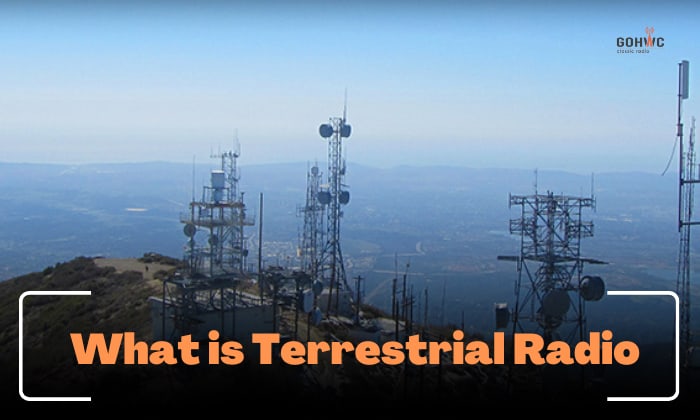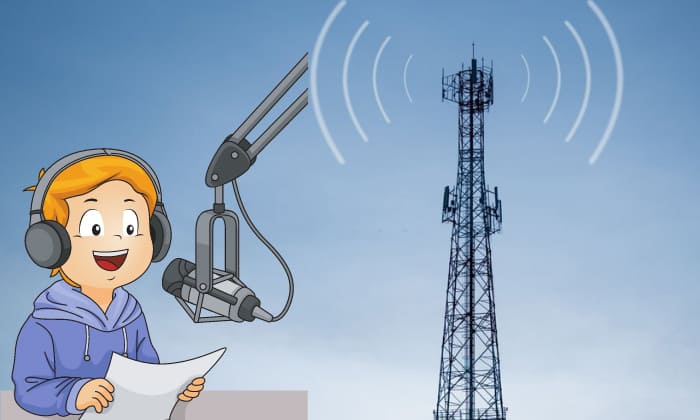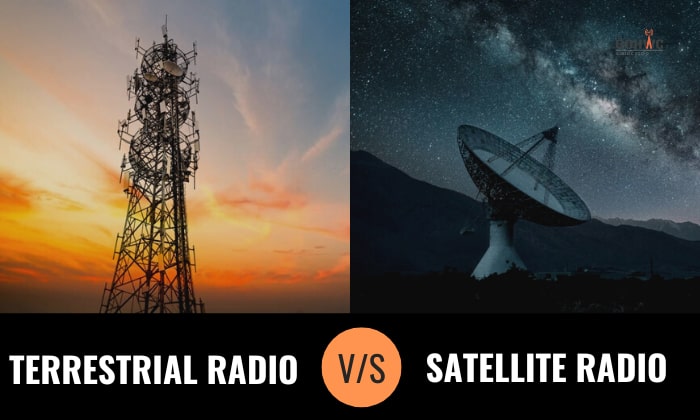What is terrestrial radio? It is vital and very relevant in the field of broadcasting in the modern world. As its name suggests, it’s a form of broadcasting, when radio waves are sent to and from land-based (terrestrial) stations. The other type is satellite radio, which broadcasts via satellites.
As the technology improved, the world saw the emergence of terrestrial digital radio, which made transmission better and in tune with other digital devices. Terrestrial radios remain relevant thanks to their countless applications.
Terrestrial Radio Meaning
Terrestrial radio is crucial in amplitude and frequency modulation (AM and FM) broadcasting. As mentioned, it can be digital or analog, but whichever the case, so long as the transmission involves antenna and land-based broadcasting (regardless of the technology used), it is considered terrestrial.
Frequencies vary in terrestrial radio broadcasting. The lower the frequency (less than two megahertz), the farther its coverage. After all, radio signals depend on the planet’s curve, making it an obstruction when transmitting.
The following are the types of frequencies used by amateur radio enthusiasts and in a professional setting:
- High frequency (HF) covers the three to 30 MHz range, where citizens band (CB) and ham radios operate alongside aviators and meteorologists.
- Very high frequency (VHF) spans the 30 to 300 MHz range, is mainly used by FM and television broadcasters, air traffic controllers, and land mobile stations.
- Ultra-high frequency (UHF) works from the 300 to 3,000 MHz range, which is the domain of TV broadcasters and wireless phone communicators (walkie-talkie users).
VHF is ideal for FM and short-distance terrestrial broadcasting because it has less interference, so the transmission is clean with a strong signal. Meanwhile, AM broadcasting works in the UHF range, from 535 to 1,605 MHz.
There are other frequency types, from extremely low to extremely high, but HF to UHF is considered the “best-used.”
Furthermore, since the transmission is land-based, obstructions are always present. As mentioned, since the Earth’s curvature affects radio signals, those in hilly or mountainous areas are prone to poor reception. Radio waves can’t pass through metals, so devices near metal structures will have a difficult time catching signals, too.
Due to challenges in transmission, there’s a need for aids such as antennas and repeaters, which strengthen the reach of terrestrial radios.
In short, the frequency range and environment of the station matter because of how terrestrial radio works. Be it short- or long-distance, this type of broadcasting is for amateur enthusiasts and various industries.
Terrestrial Radio vs Satellite Radio
The terrestrial radio definition is straightforward: it’s land-based. Its opposite is satellite radio, which broadcasts via artificial satellites – which is when the signal from Earth transmits to one of the satellites in Earth’s orbit and bounces back to the stations for wider coverage.
It’s used by TV broadcasters in need of extended reach. As with terrestrial broadcasting, the environment can affect the transmission in various ways (obstructions and the planet’s curvature). Satellites, however, are able to overcome such challenges, which is helpful among radio operators.
Of course, a terrestrial radio broadcasting setup is cheaper than a satellite one. The latter employs receivers in households or cars, making its reach nationwide or global.
Terrestrial radio, meanwhile, is usually set up with amplifiers, filters, duplexers, and transceivers, among others. It is advantageous in areas needing a reliable communications system because it’s easy to install and maintain.
They can also be digital, which varies in standard:
- Digital Audio Broadcasting (DAB)
- HD Radio (HDR)
- ISDB-T International or Sistema Brasileiro de Televisão Digital (SBTVD)
- Digital Radio Mondiale (DRM)
- Digital multimedia broadcasting (DMB)
Conclusion
With this information about radio broadcasting, you’ll be more than adept at answering the next time someone asks, “What is terrestrial radio?” Much so that in the chance there’s a terrestrial radio podcast out there, you might as well be one of the speakers.
Terrestrial radio broadcasting will remain relevant even as the world’s technology improves. Its operations are simple but benefit billions of people, from mere radio listeners to avid operators.

Hello! I am Hart, the content writer and editor here at G0HWC. I used to be in the same local radio club with Howe, and he convinced me to join him in spreading my love for the radio with others. With a background in radio studies, I spend every day crafting accurate, easy to read content on various topics related to owning and using radios. I hope that my content can help you confidently venture in your radio journey!



